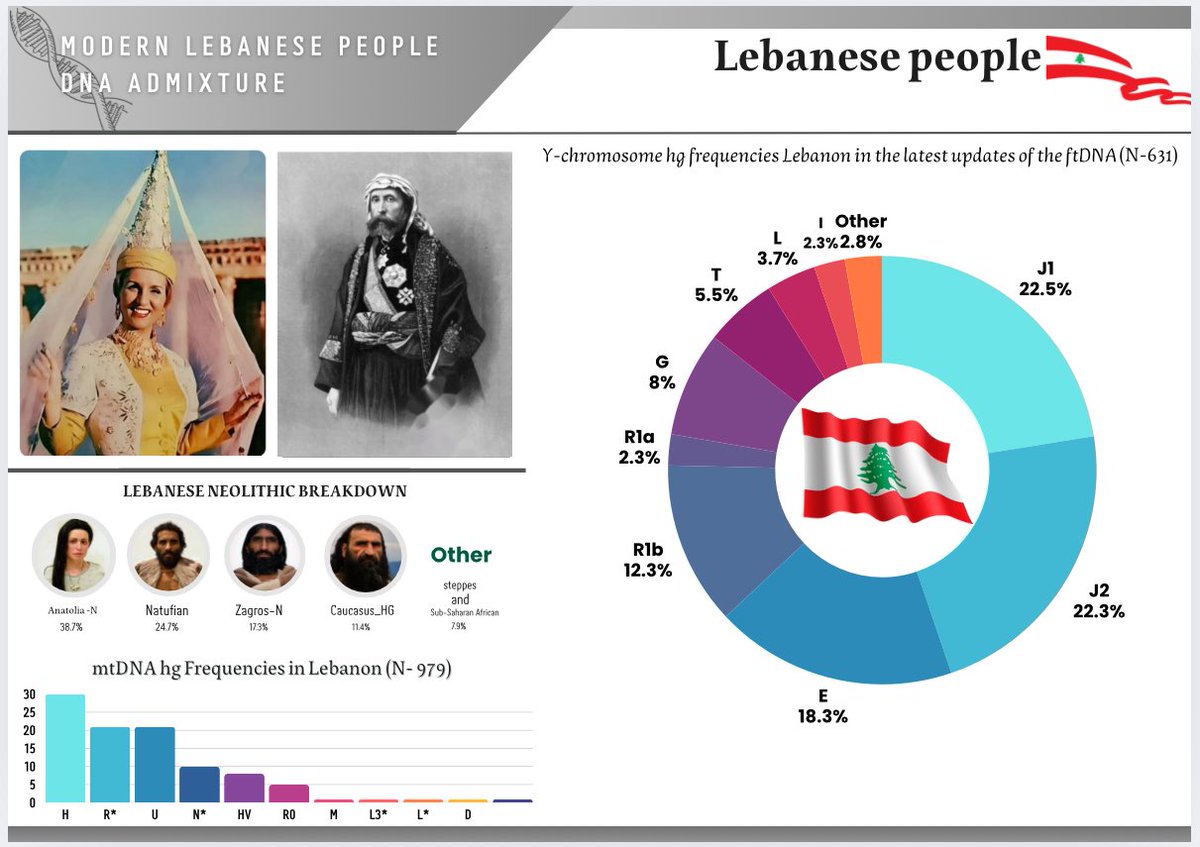
Малак Мухаммад Калибиф
@Malak356775433
My family’s Y-dna R1a Mt-dna H4a and K1a4


Haplogroup T is one of the oldest Eurasian paternal groups The remains of which have been found in North Africa as a result of reverse migration. It is widespread in East Africa among Somalis and Djiboutians and in sub- Saharan Africa among Toubou, Fulani, and Lemba Jews. #Africa

"Genetic history of Scythia" High-quality genomic data generated from 131 ancient individuals from Great Scythia and neighboring regions of the Bronze Age and the Iron Age. Including relationships between Scythians and elite Scythians. science.org/doi/10.1126/sc…
Y-DNA haplogroups and genetic mixture of the Tat people of the Caucasus (Azerbaijan and Dagestan ) also called the Caucasian Persians, whose language is Iranian Persian are genetically and linguistically distinct from the Tat people of Iran. (Tat) is a word of Turkish origin.
Genetic analysis of Georgian Mingrelians reveals long-term population continuity in western Georgia🇬🇪 (Caucasus)
Facial reconstruction of an Aryan man belonging to the Srubnaya culture. The Srubnaya culture had a wolf cult, and rites where teenagers would have to sacrifice their pet dogs. The 19-year old man had an overall medium sized skull, m1 - 191mm, m8 - 139.5mm, and m45 - 135mm.
New skull and facial reconstruction of a man from the Sintashta burial culture who suffered from Acromegaly, made by Dmitry Pozdnyakov Andrey Epimakhov et al. / Archaeological and Anthropological Sciences, 2024
They are modeled as Anatolian Neolithic and Caucasian Hunter Gatherer as a two admixture. These farmers were probably also the first winemakers.
Geographic settlements of Shulaveri Shomu culture Central Farmers from 6.000 to 5.000 BCE Chokh site in Dagesta (not to see in this map)was likely also Shulaveri-Shomu outlier And it‘s likely they had interacted with Eneolithic EHG Steppe people Quoted from a friend Šuppiluliuma
Geographic settlements of Shulaveri Shomu culture Central Farmers from 6.000 to 5.000 BCE Chokh site in Dagesta (not to see in this map)was likely also Shulaveri-Shomu outlier And it‘s likely they had interacted with Eneolithic EHG Steppe people Quoted from a friend Šuppiluliuma

3,800 years old intact warrior Kurgan found in Azerbaijan. The interred warrior (estimated to have been over 2 meters (6'6) tall,) was buried in a semi-flexed position. Its probably associated with the Trialeti Vanadzor culture. popular-archaeology.com/article/a-3800…
Abashevo culture: b. Women's headdress, c. Reconstructed house (c. 10x4m) from Beregovskiye, d. Cheek-piece for horse-bridle from Utyevka, e. Abashevo burial from Pikshiki.
Y-DNA haplogroups and genetic mixture of the Lebanese people, which consists of eighteen sects distributed among Muslims, Christians, Druze, in addition to the Armenians who form part of Lebanese society. Other haplogroups are Q, N, R2, H, A, C. #Lebanon #Phoenicians #Genes

Colorized reconstruction of a man based on the skull from the Poltavka culture 2500 - 2100 BC, which was like other steppe groups living close to the steppes.
While working with my father in his company, I met many Asians from China and Korea. They had a marketing acumen and a quick problem-solving instinct I had never seen before. I believe this is primarily due to their educational system، This young man is an example of that.

The Kurds number more than 35 million. Assuming that the R1a ratios among them are close to 10%, excluding women, this means that there are more than 1.5 million Kurdish men of Aryan paternal ancestry For your information founder's influence among Kurds is not limited to R1a only
Breaking News: Only 8.5% of the Kurdistan samples had R1a-Z93, now divide it between subclades and you'll have even less. Steppe theory is getting weaker for each day, for the Iranian cause at least. But the biggest news is actually that these haplogroups seems to be regional…
Y-DNA haplogroups of Turkish citizens residing in cities south and east of the Black Sea and neighboring areas .
cool! in this case the autosomal sticks out to me as more interesting than the y-dna 😅 i went to check the rus_alan over andronovo as i am not familiar with the alan sample... interesting to see a bit of han